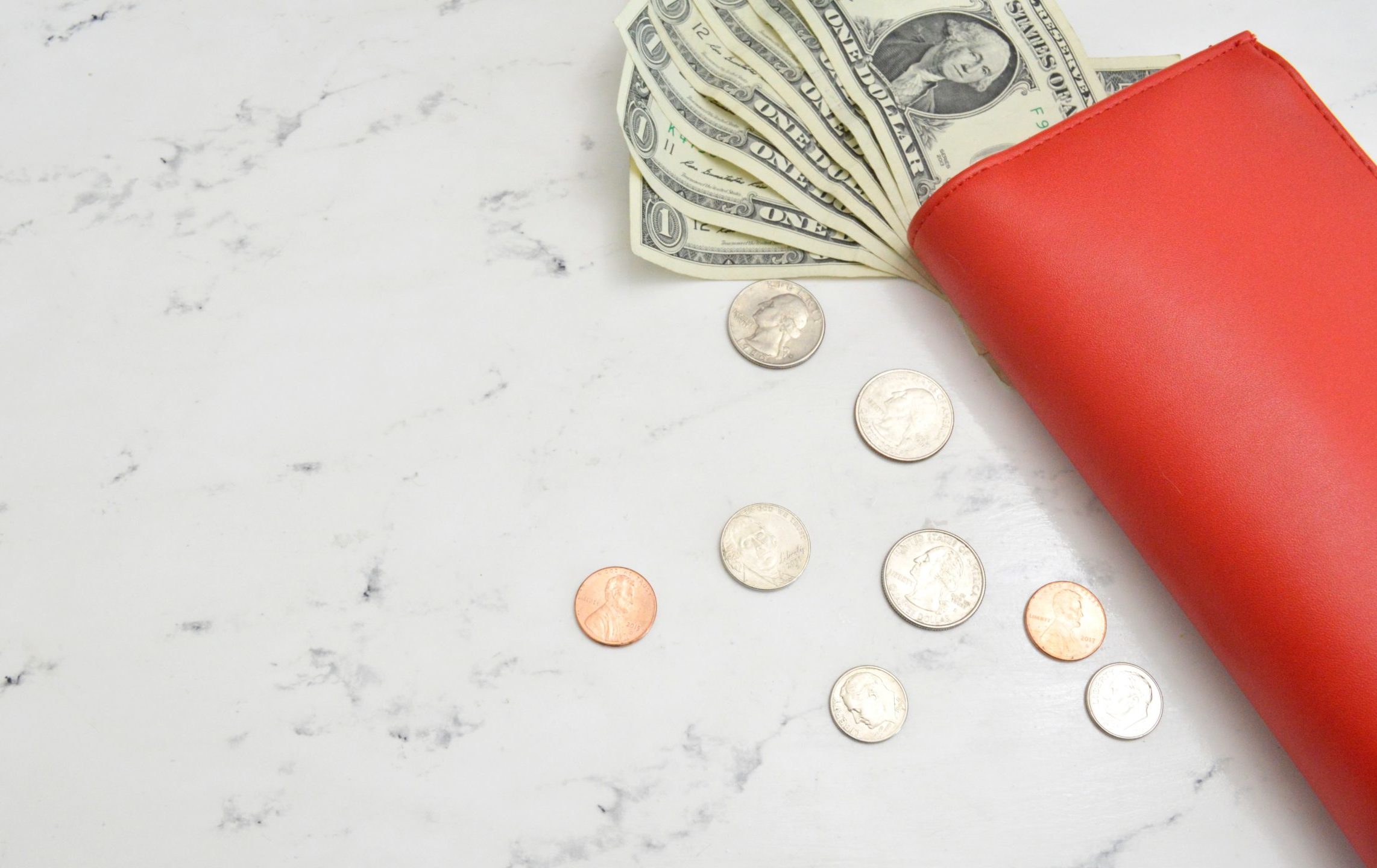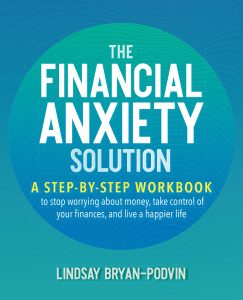
What Is Financial Anxiety? How to Cut Money Stress
- Book Sample /
- Health
- Self-Help
 Everyone experiences some level of money stress at some point. But when your money stress turns into paralyzing financial anxiety, you need to break the cycle! The article below is adapted from The Financial Anxiety Solution, an interactive workbook that will help you understand why you always feel so stressed about money, how you can make confident financial choices, and proven techniques to manage your money, reduce anxiety, and find financial freedom.
Everyone experiences some level of money stress at some point. But when your money stress turns into paralyzing financial anxiety, you need to break the cycle! The article below is adapted from The Financial Anxiety Solution, an interactive workbook that will help you understand why you always feel so stressed about money, how you can make confident financial choices, and proven techniques to manage your money, reduce anxiety, and find financial freedom.
The excerpt below offers a brief intro into what is financial anxiety and how to overcome money stress, and then offers a couple of getting started exercises to help you start thinking about your money mindset and relationship to money, as well as how to get in touch with your body to identify how stress affects you physically.
For more information on financial anxiety, budget stress, and healthy money mindsets, check out The Financial Anxiety Solution, by financial therapist Lindsay Bryan-Podvin!
Money and Anxiety
Most Americans today experience some degree of anxiety. At the time of this writing, over 51% of Americans agree to feeling anxious, and 18% of Americans meet the criteria for an anxiety disorder. Money is ranked number two in terms of what is stressing Americans out, with 62% of them saying it is a significant or somewhat significant source of stress. Financial anxiety results in ineffectively interacting with money. That means making financial decisions quickly, irrationally, or without weighing the pros and cons in order to avoid dealing with finances.
When it comes to dealing with your finances, the more anxious you are, the less likely you will be to take action toward improving your financial health. This unhealthy attitude toward thinking about or engaging with personal finances often looks like the following:
• Physical symptoms such as a racing heart, difficulty breathing, nausea, tingling, sweating, and dizziness.
• Second-guessing after you make a 401(k) index fund selection.
• The pit in your stomach when the bill comes at a dinner with friends.
• Avoidance when your partner wants to talk about household bills.
Financial anxiety isn’t recognizable in the Diagnostic and Statistical Manual of Mental Disorders, the so-called Bible of mental illnesses, but it is something more financial planners, behavioral economists, and financial therapists are recognizing and caring for, even if it isn’t “officially” in the book.
Start From the Beginning
Let’s start by reflecting on the things that contribute to your current money mindset. I can’t tell you how many of my clients come to me prioritizing someone else’s needs. Too often, they are confused or frustrated, then when we do the numbers, their money is spent on others first. By others, I also mean other “things.” They could be spending money on nights out with neighbors, shopping for their niece’s birthday, or upgrading their car lease. In this exercise, I invite you to start with yourself. Yes, this is the “oxygen mask on yourself first” drill. Think about getting yourself in a good space before thinking about how you can help others financially.
Your Relationship With Money
What do you want your relationship with money to look like? This exercise will help you acknowledge that you do have a relationship with money. This is the basis of setting your new money story or intention. This is the foundation on which the rest of your money story will be built. You can’t talk about your spouse’s money habits, trying to teach your kids about money, or communicating with your aging parents about their money until you know intimately what your relationship will look like.
Journal on the following questions:
- What is my relationship with money like?
- What is my money doing for me? What do I want my money to do for me?
- Do I want it to be the tool that takes care of my basic needs? How can I take back the power over my money?
- What is my money doing for others; for my community? Long-term, what do I want my money to do for my community, for charities, for family?
Donating, shopping, or giving to others only comes after you take care of what your money is doing for you, and what your money is doing for your family. Too often, people do these things before getting their own relationship with money figured out. For example, some clients are adamant about giving to their religious institution when they don’t yet have an emergency fund (don’t worry about an emergency fund yet, we cover it later in the book). My belief is that you have to have your personal finance house in order before you can freely give to others. It’s not charitable or generous to rob yourself of security.
Check In With Your Body
Our bodies often do an amazing job of signaling us when something is or isn’t good for us. You know that pit in your stomach when you walk into work and realize you left your laptop at home on the counter? Yup, that is an example of your body sending you a signal that something is amiss. And while our bodies often tell us what is going wrong, there are plenty of times when they also tell us when things are going right. In order to access this information, you have to get in touch with your body. One of the easiest ways to do so is through a simple grounding exercise. Use this example to practice tuning in to your body. That way, in the future, your body’s physical responses can give you insight into your emotional state. You can journal on these questions to get you started, but know that in the future, you don’t need to write down your responses. You can do this exercise anywhere at any time.
Simple Grounding Exercise
Write down what you are experiencing in this very moment. You’ll build on this exercise later in the book by applying techniques from Martha Beck, PhD, a Harvard-trained sociologist and coach who helps her clients use both cognitive and body-based tools to achieve their goals.
5. List five things you can see: people, water bottle, phone, pen, lamp
4. List four things you can feel: hair, jewelry, your feet in your shoes, a book
3. List three things you can hear: footsteps, air conditioner blowing, music
2. List two things you can smell: cologne or perfume, lunch
1. List one thing you can taste: toothpaste
This simple exercise does several things. It gets you out of your head temporarily, allows you to pause, and also allows you to check in with how your body is feeling. Additional questions you can add are:
- What does my stomach feel like? Hungry, nauseous, knotted up?
- Is there any tension in my body? Perhaps my lower back, jaw, or shoulders?
- How is my breathing? Relaxed, shallow, forced?
You can use this exercise any time you start to feel stress or anxiety, or before you sit down to work on money-related tasks that might make you feel uncomfortable.
* * *
Don’t forget to check out The Financial Anxiety Solution for more exercises and activities to take control of your financial health





